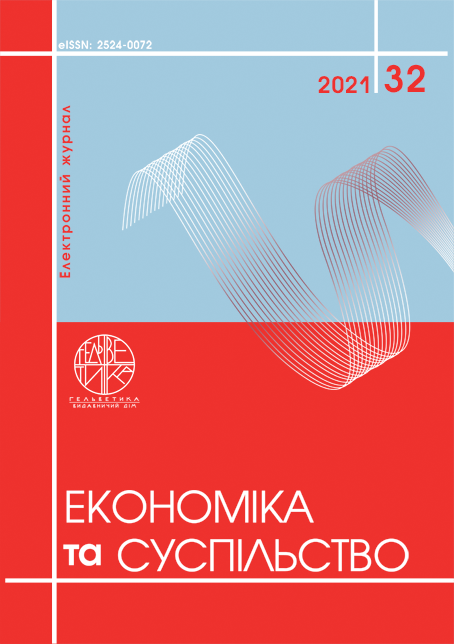THE IMPACT OF LABOUR MARKET ON MIGRATION PROCESS IN THE CENTRAL AND EASTERN EUROPE
Abstract
The article presents the results of the study of the main trends of the labor market in Central and Eastern Europe during 2010-2021; it also investigates selected labour market outcomes affecting migration processes in Bulgaria, Czech Republic, Estonia, Latvia, Lithuania, Romania, Poland, Slovak Republic, Slovenia, and Hungary. Using econometric modeling, the impact of GDP per capita, annual net earnings per employee, job vacancy rate, unemployment rate on the number of emigrants from these CEE countries was estimated. It is followed by the analysis which controls for dependence of the number of immigrants to CEE countries on labor market outcomes and GDP per capita. The simulation results demonstrate a direct impact of the indicators of net earnings per worker, the level of unemployment and quantity of emigrants from CEE countries. At the same time, there is a direct relationship between job vacancy rate, net earnings and immigration into Bulgaria, Czech Republic, Estonia, Latvia, Lithuania, Romania, Poland, Slovak Republic, Slovenia, and Hungary.
References
Borjas J. T. Native Internal Migration and the Labor Market Impact of Immigration. The journal of human resources. 2006. Vol. 2. P. 221–258. URL: http://www.hks.harvard.edu/fs/gborjas/publications/journal/JHR2006.pdf
Boswell C. Migration in Europe. Global Commission on International Migration. 2005. Vol. 9. P. 1–28.
Brandariz J. A. The Removal of EU Nationals: An Unaccounted Dimension of the European Deportation Apparatus. Central and Eastern European Migration Review. 2021. Vol. 10, No. 1, pp. 13–33.
Eurostat Data. European Commission. URL: https://ec.europa.eu/eurostat/data/database
Fidrmuc J., Huber P. The willingness to migrate in the CEECs evidence from the Czech Republic. Empirica. 2007. Vol. 34, № 4. P. 351–369.
Ghatak S., Mulhern A., Watson J. Inter-regional Migration in Transition Economies: The Case of Poland. Review of Development Economics. 2008. Vol. 12, №1. P. 209–222.
Grundey D., Sarvutytė M. The Implications of Financing Higher Education in the Context of Labour Force Migration: the Case of Lithuania. Ūkio technologinis ir ekonominis vystymas. 2007. Vol 13(3). P. 208–213.
Guardia N. D., Pichelmann K. Labour Migration Patterns in Europe: Recent Trends, Future Challenges. European Commission. Directorate-General for Economic and Financial Affairs. 2006. № 256. 52 p.
Hazans M. Migration Experience of the Baltic Countries in the Context of Economic Crisis, in: Martin Kahanec and Klaus F. Zimmermann (eds), Labor Migration, EU Enlargement, and the Great Recession. Berlin: Heidelberg: Springer, 2016, pp. 297–344.
Kaczmarczyk P., Okólski M. Oxford Review of Economic Policy, Volume 24, Number 3, 2008, pp. 599–624.
Kahanec M., Zaiceva A., Zimmermann K. F. Lessons from Migration after EU Enlargement. Discussion Paper, 2009 №4230. URL: http://www.ftp.iza.org/dp4230.pdf
Kahanec M., Zimmermann K. F. The Post-Enlargement Migration Experience in the Baltic Labor Market. – Central European University, Budapest, Hungary, Institute for the Study of Labor (IZA), CELSI, Bratislava, Slovakia, IZA and Bonn University, Bonn, Germany, 2011. 336 р.
Molodikova I. Patterns of migration in Europe in the 21st Century. Networking for sustainable spatial development of the European continent. European spatial planning and landscape. 2005. № 79. P. 61–72.
The First Six Months of SURE. European Commission. URL: https://ec.europa.eu/info/business-economy-euro/economic-and-fiscal-policy-coordination/eueconomyexplained/first-six-months-sure_en


